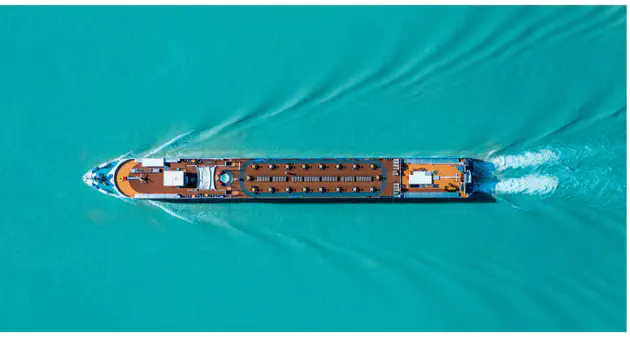Kelvin wakes
Use of an Arbitrary Lagrangian-Eulerian formulation to compute the Kelvin wake generated by a moving rigid floating
 Kelvin wake pattern generated by a cruise ship
Kelvin wake pattern generated by a cruise shipA novel linear potential model is presented to compute free surface flows of incompressible fluids produced by the motion of a floating rigid body in the presence of an underlying non-uniform flow (see figure on top). In particular, the proposed model enables the accurate numerical simulation of the Kelvin wake pattern in a computational domain of reduced size. The governing equations are obtained by using an Arbitrary Lagrangian Eulerian (ALE) formulation, which involves the underlying velocity of the fluid flow around the floating body, and an adimensional analysis to derive the novel linear system of equations for free surface flows.
 Figure 1: Kelvin wake pattern generated by a double twin hull.
Figure 1: Kelvin wake pattern generated by a double twin hull.
The discretization of the proposed model is made by a standard Galerkin finite element method, where a SUPG-inspired upwinding strategy has been used in combination with a Perfectly Matched Layer technique, which allows to truncate the original unbounded fluid domain without introducing spurious reflections in the Kelvin wake pattern. The numerical simulations computed with the proposed approach are compared with respect to those other results obtained by the classical linear potential model with uniform underlying flow and the full incompressible Navier-Stokes equations equipped with the k-$\omega$ SST turbulent model. This numerical comparison is discussed in terms of a classical hydrodynamic floating body benchmark involving the Wigley hull (see [1] for more details).
References
[1] A. Bermúdez, O. Crego, A. Prieto.Upwind finite element-PML approximation of a novel linear potential model for free surface flows produced by a floating rigid body.
Applied Mathematical Modelling, 103 (2022), 2, 824-853. (pre-print)